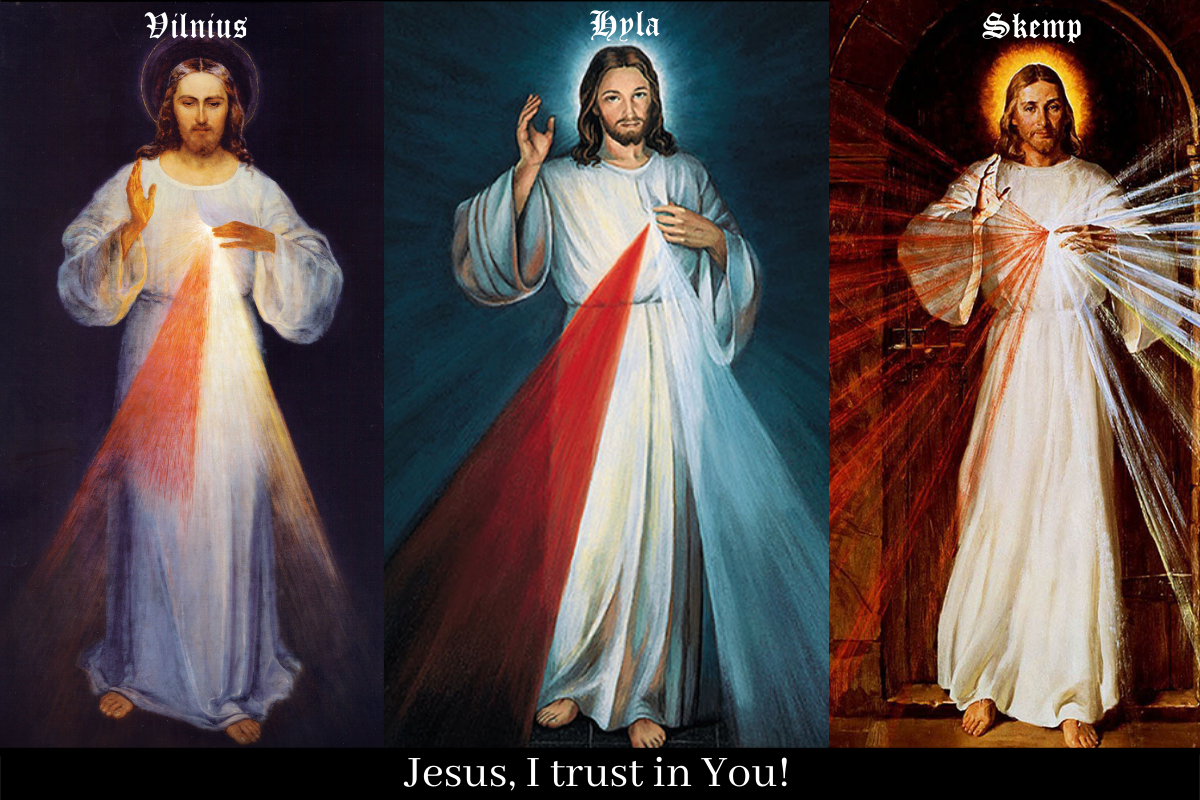Week Beginning May 29, 2022
Mercy in Action
We become capable of love because of the sacrificial love poured out for us from above. We do not merit that love; God loves us even though we do not deserve it. He loves us because of who He is–loving by nature–not because of who we are. Only with His help can we learn to love the pure and selfless way that He loves. In his Apostolic Letter Misericordia et Misera, Pope Francis states, “Mercy is always a gratuitous act of our heavenly Father, an unconditional and unmerited act of love.”
Mercy becomes our social expression of Christian love. Pope Saint John Paul II links mercy and love as follows: “For mercy is an indispensable dimension of love; it is as it were love’s second name” (Dives in Misericordia). He recalls that for disciples of Jesus, “Mercy never ceased to reveal itself, in their hearts and in their actions, as an especially creative proof of the love which does not allow itself to be ‘conquered by evil,’ but overcomes ‘evil with good’” (Dives in Misericordia).
In other words, mercy is a type of love that allows us to encounter evil, brokenness, and sin with hearts so wrenched open that we are compelled to help by putting that love into action to alleviate the suffering of others. Jesus references the cycle of mercy when he says, “Blessed are the merciful, for they will be shown mercy” (Matthew 5:7). In order for us to benefit from God’s gifts, we must cooperate with His grace. It is not enough to simply ask for mercy and trust in mercy. We must also let His mercy flow through us to others. The unmerited grace we receive from God allows us to, in turn, perform our own meritorious acts. As recipients of His loving mercy, we become capable of demonstrating love, forgiveness, and compassion to others. In so doing, we are all able to share in God’s joy and peace.
In her diary, Saint Faustina relays the instructions Jesus provides to her regarding mercy. She teaches us that we must show mercy out of love for Jesus and that we can demonstrate this mercy in three ways:
“My daughter, if I demand through you that people revere My mercy, you should be the first to distinguish yourself by this confidence in My mercy. I demand from you deeds of mercy, which are to arise out of love for Me. You are to show mercy to your neighbors always and everywhere. You must not shrink from this or try to excuse or absolve yourself from it.
I am giving you three ways of exercising mercy toward your neighbor: the first – by deed, the second – by word, the third – by prayer. In these three degrees is contained the fullness of mercy, and it is an unquestionable proof of love for Me. By this means a soul glorifies and pays reverence to My mercy” (Diary, 742).
When our hearts are moved to compassion, so, too, must we move in response. First, we can physically assist those who are suffering. If we cannot perform a tangible deed, we can offer comforting or helpful conversation. If we cannot console through our words, we can pray. No matter how big or small the circumstance, no matter how near or far we are, we can find a way to show mercy for the sake of others and for the whole world. This is especially important for the dying: “By your prayers, obtain for them trust in My mercy, because they have most need of trust, and have it least. Be assured that the grace of eternal salvation for certain souls in their final moment depends on your prayer” (Diary 1777).
The Catechism of the Catholic Church defines the works of mercy as follows:
“The works of mercy are charitable actions by which we come to the aid of our neighbor in his spiritual and bodily necessities. Instructing, advising, consoling, comforting are spiritual works of mercy, as are forgiving and bearing wrongs patiently. The corporal works of mercy consist especially in feeding the hungry, sheltering the homeless, clothing the naked, visiting the sick and imprisoned, and burying the dead. Among all these, giving alms to the poor is one of the chief witnesses to fraternal charity: it is also a work of justice pleasing to God” (CCC 2447).
In addition to our individual participation in Divine Mercy, we also participate as members of the Church. Mercy is especially abundant in the Sacraments. In his Regina Caeli message on Divine Mercy Sunday in 2008, Pope Benedict XVI summarized:
“Indeed, mercy is the central nucleus of the Gospel message; it is the very name of God, the Face with which he revealed himself in the Old Covenant and fully in Jesus Christ, the incarnation of creative and redemptive Love. May this merciful love also shine on the face of the Church and show itself through the sacraments, in particular that of Reconciliation, and in works of charity, both communitarian and individual. May all that the Church says and does manifest the mercy God feels for man, and therefore for us. When the Church has to recall an unrecognized truth or a betrayed good, she always does so impelled by merciful love, so that men and women may have life and have it abundantly (John 10:10). From Divine Mercy, which brings peace to hearts, genuine peace flows into the world, peace between different peoples, cultures and religions.”
Let Divine Mercy shape our lives and actions. This week, make an effort to respond compassionately to the evils both in our world and in our own community by practicing the three ways to exercise mercy toward your neighbor. For added strength, pray the general exercise listed below that Saint Faustina posted in her diary:
“+ O Most Holy Trinity! As many times as I breathe, as many times as my heart beats, as many times as my blood pulsates through my body, so many thousand times do I want to glorify Your mercy.
+ I want to be completely transformed into Your mercy and to be Your living reflection, O Lord. May the greatest of all divine attributes, that of Your unfathomable mercy, pass through my heart and soul to my neighbor.
Help me, O Lord, that my eyes may be merciful, so that I may never suspect or judge from appearances, but look for what is beautiful in my neighbors’ souls and come to their rescue.
Help me, that my ears may be merciful, so that I may give heed to my neighbors’ needs and not be indifferent to their pains and moanings.
Help me, O Lord, that my tongue may be merciful, so that I should never speak negatively of my neighbor, but have a word of comfort and forgiveness for all.
Help me, O Lord, that my hands may be merciful and filled with good deeds, so that I may do only good to my neighbors and take upon myself the more difficult and toilsome tasks.
Help me, that my feet may be merciful, so that I may hurry to assist my neighbor, overcoming my own fatigue and weariness. My true rest is in the service of my neighbor.
Help me, O Lord, that my heart may be merciful so that I myself may feel all the sufferings of my neighbor. I will refuse my heart to no one. I will be sincere even with those who, I know, will abuse my kindness. And I will lock myself up in the most merciful Heart of Jesus. I will bear my own suffering in silence. May Your mercy, O Lord, rest upon me.
+ You Yourself command me to exercise the three degrees of mercy. The first: the act of mercy, of whatever kind. The second: the word of mercy – if I cannot carry out a work of mercy, I will assist by my words. The third: prayer – if I cannot show mercy by deeds or words, I can always do so by prayer. My prayer reaches out even there where I cannot reach out physically.
O my Jesus, transform me into Yourself, for you can do all things” (Diary 163).
Week Beginning May 22, 2022
Trust in Divine Mercy
When Jesus appears to Saint Faustina, he emphasizes the condition of trust in his plans for Divine Mercy. “The graces of My mercy are drawn by means of one vessel only, and that is–trust. The more a soul trusts, the more it will receive. Souls that trust boundlessly are a great comfort to Me, because I pour all the treasures of My graces into them. I rejoice that they ask for much, because it is My desire to give much, very much” (Diary 1578).
To trust, we need to believe in the truth and reliability of something. When we trust in God, we have faith in His love for us and the promises He makes to us. “Jesus Christ is the same yesterday, today, and forever” (Hebrews 13:8). We trust in Jesus, because he is stable, true, and unwavering. Trust expresses our disposition of which God is most worthy.
It is difficult, however, to maintain our trust as we endure our trials. Our feelings or circumstances might tempt us to question God’s love for us. While our emotions are fleeting, the grace we receive from our choice to trust in Divine Mercy is eternal. Times of great suffering call for an even greater trust, because each burden is an invitation to grow closer to God. By uniting our troubles with Christ’s Passion, we give meaning and purpose to our struggles. “Consider it all joy, my brothers, when you encounter various trials, for you know that the testing of your faith produces perseverance. And let perseverance be perfect, so that you may be perfect and complete, lacking in nothing” (James 1:2-4). Whenever you feel weak or doubtful, pray to strengthen your trust in Divine Mercy.
In a homily during his apostolic pilgrimage to India, Pope Saint John Paul II says, “Even when you feel discouraged or weighed down by personal failures or sin, trust even more in the love of God for you. Turn to him for mercy, forgiveness and love” (February 8, 1986).
In her diary, Saint Faustina describes how Jesus wants to guide sinners through an authentic conversion and change of heart:
“Write this for the benefit of distressed souls: when a soul sees and realizes the gravity of its sins, when the whole abyss of the misery into which it immersed itself is displayed before its eyes, let it not despair, but with trust let it throw itself into the arms of My mercy, as a child into the arms of its beloved mother. These souls have a right of priority to My compassionate Heart, they have first access to My mercy. Tell them that no soul that has called upon My mercy has been disappointed or brought to shame. I delight particularly in a soul which has placed its trust in My goodness” (Diary 1541).
Jesus longs to heal our broken hearts and purify our tarnished souls through God’s mercy and love. Our sins wound God, because they wound us by pulling us away from Him. When we trust in God’s plan for us and cooperate with His grace, we enable Him to transform us. Our holiness is only possible if we allow God to fill us with His holiness. “All of us, gazing with unveiled face on the glory of the Lord, are being transformed into the same image from glory to glory, as from the Lord who is the Spirit” (2 Corinthians 3:18).
Do not be so vain in your humanity to think your sins are too great for the healing mercy of our all-powerful God. Jesus reveals the secret to the Sacrament of Reconciliation: “from this fount of mercy souls draw graces solely with the vessel of trust. If their trust is great, there is no limit to My generosity. The torrents of grace inundate humble souls. The proud remain always in poverty and misery, because My grace turns away from them to humble souls” (Diary 1602).
Look no further than to the lives of the saints to see that this is true. Saint Dismas, known to us as the “Good Thief,” genuinely repented for his crimes before his death on the cross. He trusted in Jesus and joined him in Paradise. Before his conversion, Saint Paul persecuted Christians. After trusting in Jesus, he became an apostle and a saint. Saint Augustine pursued a life filled with sinful desires before becoming a doctor of the Church and a saint. We begin to receive Sacramental graces at Baptism, when we are adopted as children of God. Our path to sanctification continues every time we trust in Divine Mercy.
In his address at the Shrine of Divine Mercy in Krakow, Pope Saint John Paul II declared, “There is nothing that man needs more than Divine Mercy–that love which is benevolent, which is compassionate, which raises man above his weakness to the infinite heights of the holiness of God” (June 7, 1997).
This week, critically evaluate the strength of your trust in Divine Mercy. Is there anything preventing you from receiving God’s special graces? How can you be more open to benefiting from this fount of mercy? What will it take for you to be able to pray with confidence and conviction, “Jesus, I trust in You!”?
Week Beginning May 15, 2022
Ask for Divine Mercy
How can we as mere humans even consider asking God, the Most High, for mercy? The opening paragraph of the Catechism of the Catholic Church explains:
“God, infinitely perfect and blessed in himself, in a plan of sheer goodness freely created man to make him share in his own blessed life. For this reason, at every time and in every place, God draws close to man. He calls man to seek him, to know him, to love him with all his strength. He calls together all men, scattered and divided by sin, into the unity of his family, the Church. To accomplish this, when the fullness of time had come, God sent his Son as Redeemer and Savior. In his Son and through him, he invites men to become, in the Holy Spirit, his adopted children and thus heirs of his blessed life” (CCC 1).
Our salvation, therefore, is made possible by the incarnation. The ultimate sacrifice by Jesus Christ, motivated by mercy and love, restores our relationship with God, which was damaged by Original Sin. Saint Thomas Aquinas teaches us that this plan surpasses restoration by potentially elevating us to the perfection of life in the Trinity itself: “The only-begotten Son of God, wanting to make us sharers in His divinity, assumed our nature, so that He, made man, might make men gods.” This means that the plan of God is not for us to remain merely human, but rather for us to become divinely human in the sense that we can pass from earthly death to eternal life.
The salvific grace that enables this transformation is a completely unmerited gift from God. “For by grace you have been saved through faith, and this is not from you; it is the gift of God; it is not from works, so no one may boast. For we are his handiwork, created in Christ Jesus for the good works that God has prepared in advance, that we should live in them” (Ephesians 2:8-10).
In the New Testament, the Greek word eleos is commonly translated as “mercy.” It stems from a root word that means oil that is poured out. In that way, we associate eleos with the merciful love of God pouring out upon His people. John 19:34 references the blood and water pouring out of the pierced side of Christ, which is symbolic of the graces that flow from the Sacraments and associated with the birth of the Church. When we sing Kyrie Eleison and Christie Eleison, we are praying that God’s merciful love will pour like holy oil onto His adopted children.
Saint Paul proclaims that grace outmatches the productivity of sin. The Catechism of the Catholic Church states:
“As St. Paul affirms, ‘Where sin increased, grace abounded all the more.’ But to do its work grace must uncover sin so as to convert our hearts and bestow on us ‘righteousness to eternal life through Jesus Christ our Lord.’ Like a physician who probes the wound before treating it, God, by his Word and by his Spirit, casts a living light on sin:
Conversion requires convincing of sin; it includes the interior judgment of conscience, and this, being a proof of the action of the Spirit of truth in man’s inmost being, becomes at the same time the start of a new grant of grace and love: ‘Receive the Holy Spirit.’ Thus in this ‘convincing concerning sin’ we discover a double gift: the gift of the truth of conscience and the gift of the certainty of redemption. The Spirit of truth is the Consoler” (CCC 1848).
When we recognize our brokenness and bring our shortcomings to God with due humility and repentance, we can ask for His mercy. Saint Faustina writes in her diary, “even if a person’s sins were as dark as night, God’s mercy is stronger than our misery. One thing alone is necessary; that the sinner set ajar the door of his heart, be it ever so little, to let in a ray of God’s merciful grace, and then God will do the rest” (Diary 1507). Participating in the Sacraments opens the door to receive that ray of God’s merciful grace.
Prayer also sets ajar the doors to our hearts. Our Lord instructs Saint Faustina, “The loss of each soul plunges Me into mortal sadness. You always console Me when you pray for sinners. The prayer most pleasing to Me is prayer for the conversion of sinners” (Diary 1397).
This week, as you encounter God in the Sacraments and approach Him in prayer, remember that we as sinners are not alone. When you ask for mercy for yourself, be sure to also ask Him to pour His mercy out for the conversion of sinners and for the whole world.





